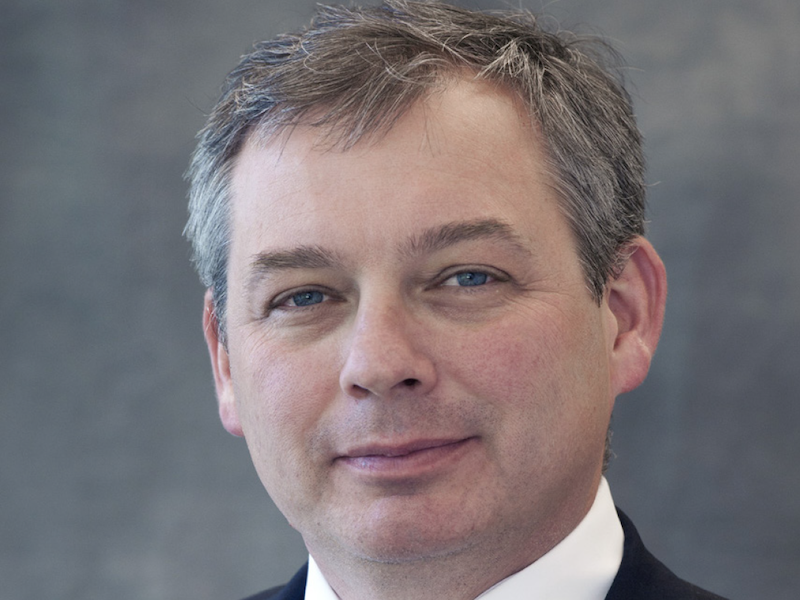

Fixed income investing isn’t known for its excitement, but in the volatile markets of the post-coronavirus pandemic period, bond specialists may be in for a wild ride.
“There’s more yield in the marketplace, so bonds are becoming a better competitor to stocks. . . . You should be asking yourself, how do I get more to my portfolio’s core allocation?” said Jeffrey Moore, portfolio manager in the fixed income division at Fidelity Investments, during the Canadian Investment Review‘s 2022 Risk Management Conference. “I think there’s a whole bunch of ways.”
The key to understanding the U.S. Federal Reserve’s responses to inflation is to think like its chairman, Jerome Powell, rather than to look at its forecasts and consumer price index reports, he noted. “Every time we come up to a monthly CPI, realize the market will be — full stop — waiting for that one number. But there are two numbers to pay attention to right now, the CPI and jobs.”
Read: How institutional investors can use fixed income amid low yields
Moore said fixed income investors gain a multi-sector perspective by considering employment figures. “You’re probably going to have some beta rotation in your portfolio, so you’re going to want to have a sense of interest rate sensitivity and where the debt markets might go, as well as what’s happening with different types of risk assets. This is also a great way to look at it to start because this is what Chairman Powell is focused on. . . . I call the approach ‘now casting.'”
Unlike forecasts, this dual-figure approach offers key insights about how quickly the Fed will reduce its balance sheet as quantitative easing is wound down, he added, suggesting other approaches may overestimate the central bank’s sense of urgency. “The balance sheet is going to stay much larger than you think for a lot longer. I don’t think they have any idea how they’re going to bring it down in a big way.”
To back this up, Moore pointed to the enormous number of mortgages bought by the Fed during the aftermath of the pandemic — a surge that’s left almost one in three American homeowners directly indebted to it. “They’re probably going to keep this at an elevated level, though the Fed has backed away from buying up new ones at auctions.”
Read: The benefits of looking beyond borders in fixed income
For institutional investors, the Fed’s lackadaisical approach to reducing its balance sheets should encourage an increased focus on interest rate sensitivity to protect from volatility, he said. “If you go back over the last 10 years, the average daily move of a 10-year treasury note was three to four basis points. It’s now going to be eight to 10. . . . What’s interesting is that’s really what the daily rate volatility was in the 1990s, so this isn’t unprecedented. It’s just that we got really used to rate repression and a central bank that was very heavy handed.”
Another weapon he suggested fixed income investors keep in their arsenal during periods of high-rate volatility is the Merrill Lynch Option Volatility Estimate index. “If you’re going to do something tactical and you’re going to try to get more to your core allocation or more absolute returns, the first thing you have to realize is that every market has its nature. In this one, the rate volatility is higher and the way to look at that is the MOVE index.”
In going through the MOVE index, Moore said his team analyzed a baker’s dozen of the bond markets generating significant interest from investors. In several cases, the Fidelity team found reason to question popular sentiment, especially in regard to emerging markets. “EM is either first or worse in your portfolio, there’s no middle ground. It looks like stocks, but with a third of the return, so it’s hard to allocate big chunks to it. . . . The more you put in there, the more unstable your beta is at the core level.”
Read: Half of institutional investors concerned about fixed income liquidity: survey
Up close, the other 12 bond markets also present a bewildering mix of advantages and disadvantages, he said. “You see generally positive returns. There’s some negative ones in 2013, 2015 and 2018 — but not for all. This market may look unique, but it isn’t truly unique. It’s a massive Fed cycle that walks and talks just like 2000, only with 50 per cent more beta.”
Rather than focusing on individual bond markets, Moore advised investors to take cues from the bond market aggregate. “If you’re the chief investment officer for a big pension, you love stable beta. Allocations have a good degree of certainty about how they’ll act in a portfolio. . . . So when we’re building our portfolio, we decided to focus just on the aggregate. We don’t want to own what’s in the [bond aggregate index], we just want to wiggle the same way and to have the same tails.”
Even in a high-yield environment, he said institutional investors can benefit from building a diversified bond portfolio. “One of the reasons people love bonds is that there’s generally a positive return somewhere, even if you think rates are going up. In the U.S., you could probably do something in Euros hedged back to the dollar.”
